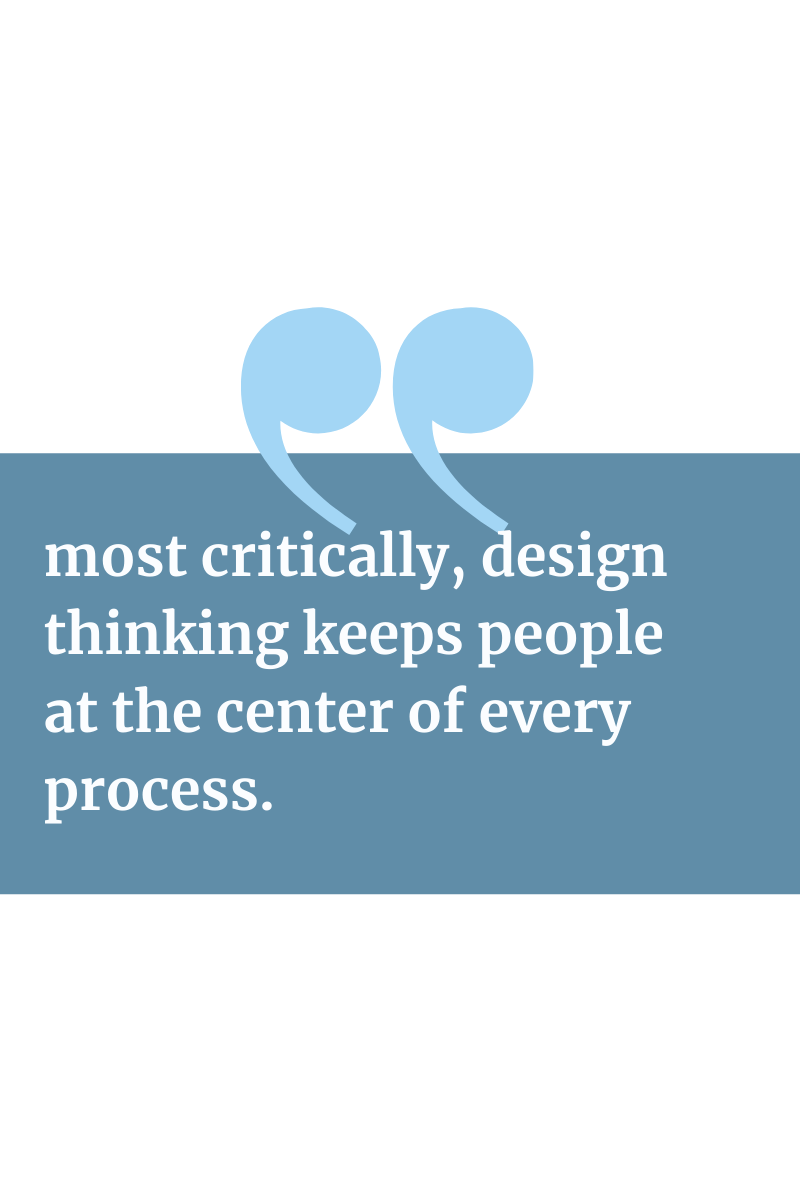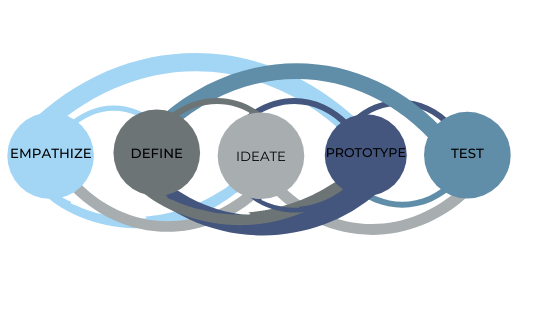Human-Centered Design: A Primer for Lawyers

A Brief History of Human Centered Design
Human-centered design is an approach to problem solving that focuses on the needs of the people with that problem. IDEO has used this approach since the company was founded in the late 70s, IDEO is credited with coining the term “design thinking” to describe the common elements and mindsets that are the hallmarks of human-centered design. Since then, IDEO has become synonymous with the term. If you want to know more about IDEO and design thinking, can read their history here, or watch “IDEO and a Story of Design.”
Design Thinking 101
Design Thinking 101
I could write my own explanation, but I think IDEO says it best:
To think like a designer requires dreaming up wild ideas, taking time to tinker and test, and being willing to fail early and often. The designer’s mindset embraces empathy, optimism, iteration, creativity and ambiguity. And most critically, design thinking keeps people at the center of every process.

While design thinking is often called a process or a methodology, it is not as linear as those terms imply. There isn’t one universal description, but in general there are five components:
- Empathy for everyone interacting with the design
- Defining the “problem”
- Ideating around ways to solve the problem
- Prototype a possible solution
- Test the design with users
Designers move through the each component and usually loop back through each part several times. They don’t spend a lot of time on any one piece – designers value “failing fast” to learn and adapt. The process often looks something like this:

It Isn’t Just for Products Any More
If you’ve heard the term “design thinking” before, it’s probably in the context of products from companies like Apple, Nike and Pepsi. (Pepsi’s former CEO Indira Nooyi credits design thinking with turning the company around.) But more and more service-based companies are adopting design thinking to improve user experience (UX in design parlance.) According to McKinsey, applying design thinking correlates to better financial outcomes for both product and service-based businesses. It’s no wonder that the most forward-thinking companies are using design thinking to drive organizational change.

Design Thinking in Law
Despite growing in popularity in other service sectors (healthcare, for example), design thinking has not been widely applied to legal services. It is time to correct that. Why? Let’s go back to IDEO for a moment and it’s General Counsel, Rocheal Soper Adranly:
Today’s general counsel need to be both business-minded and human-centered…This means having a clear awareness that legal problems are human problems.
Adranly may have been talking about general counsel, but it holds true for every lawyer. Whether we represent the corporate giants or individuals, every aspect of our work involves people. Our clients (or their representatives) are people, our staff are people, we are people. We need an approach to innovation that embraces this humanity.
